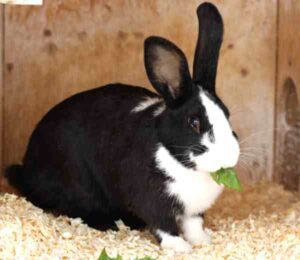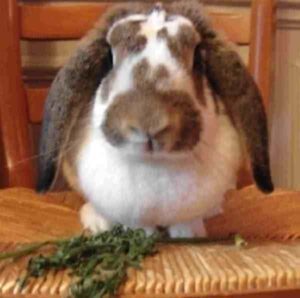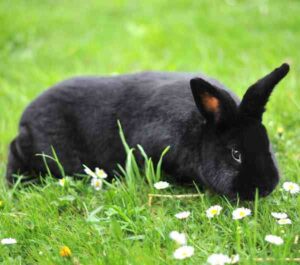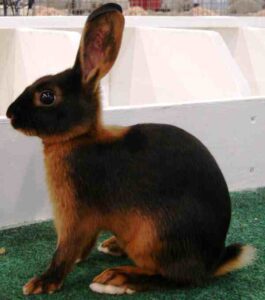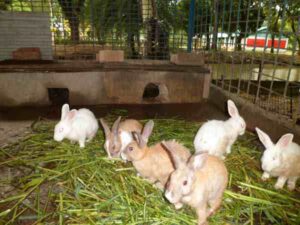Himalayan rabbit is one of the very old rabbit breeds that remains so unique today. As their name suggests and some speculate that the origin of Himalayan rabbit may be in the Far East as opposed to the Himalayas. But their exact origin is unknown.
It is one of the few breeds that were not man-made by crossing different types of rabbit breeds. The breed is also known as the Black-nose, Chinese and Egyptian. The original variety was the black Himalayan and the the blue variety was created later. Chocolate and lilac varieties are also available.
Ron Smelt of California created the American chocolate Himalayans by mixing chocolate English spots to Himalayans. The lilac variety was made by mixing the chocolate and blue Himalayans.
The Himalayan rabbit plays an important part for creating many other rabbit breeds. For example, the Californian rabbit which is a popular commercial meat rabbit breed was created from the Himalayans. The Himalayan rabbit reached the United States around the 1900s. And it is one of the earliest rabbit breeds recognized in the United States.
Himalayan Rabbit Characteristics
The Himalayan rabbit is small to medium in size. It has a white body, colored ears, nose and legs. The oval nose marking runs beneath the jaw and well up the profile of the nose towards the eyes. Depending on the variety, the colors may be black, blue, chocolate, chocolate brown or lilac.
The coloring of Himalayan rabbit is susceptible to change depending on temperature. The color grow darker in cold temperature and lighter in warmth. The babies are of white or pale grey color when born, and the coloring starts to appear at about 4 weeks. And the color develops fully over the first 6 months.
It has many similarities with the Californian rabbits. But it’s pretty easy to tell the difference between these two breed by their body type.

The Himalayans have long, cylindrical body. And the Californians are much bulkier and heavier than the Himalayans. Their head is long and slim, with short, tapering, upright ears. They have red eyes and long, slender legs.
Their body is long with a level back and hips the same width as the shoulders. They have short, fine hair and smooth, soft coat. Average body weight of the Himalayan rabbit is between 1 and 2 kg. Photo from Wikipedia.
Uses
The Himalayan rabbit is mainly raised as pets or for showing purpose. They are smaller in size, so not suitable for commercial rabbit farming purpose. They are very popular as pets.
Special Notes
Himalayan rabbits are popular and known for being calm, intelligent and friendly. They can be very affectionate if handled properly and love people. They love company and being with humans if they have been allowed to get used to be with humans form an early age. They are generally excellent with children.
Like some other rabbit breeds, the Himalayan rabbit also enjoy playing. They will be very happy if you give them some noisy toys. Compared to some other rabbit breeds, the Himalayans are very calm, easygoing and are very easily handled.
A properly cared Himalayan rabbit’s lifespan is about 7-10 years. They commonly have an extra set of teats. However, review full breed profile of the Himalayan rabbit in the chart below.
| Breed Name | Himalayan |
| Other Name | Also known as Black-nose, Chinese and Egyptian |
| Breed Purpose | Mainly kept as pets |
| Breed Size | Small to Medium |
| Weight | Average body weight of the Himalayan rabbit is between 1 and 2 kg. |
| Suitable for Commercial Production | No |
| Good as Pets | Yes |
| Climate Tolerance | All Climates |
| Coat Color | Black, Blue, Chocolate and Lilac |
| Rarity | Common |
| Country of Origin | Asia (Country or place is unknown) |

